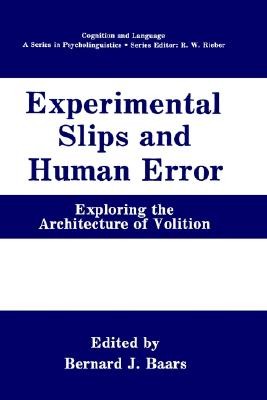| Experimental Slips and Human Error: Exploring the Architecture of Volition 1992 Edition Contributor(s): Baars, Bernard J. (Editor) |
|
 |
ISBN: 0306438666 ISBN-13: 9780306438660 Publisher: Springer OUR PRICE: $161.49 Product Type: Hardcover - Other Formats Published: November 1992 Annotation: This work makes three valuable contributions to the study of human slips and errors. It presents current data and theory; it is a complete source for the methodology and results of a 15 year laboratory research program; and it explores the overall architecture of voluntary control. Dr. Baars' work will occupy an important position in the renewed interest in the role of concious experience in the nervous system. |
| Additional Information |
| BISAC Categories: - Language Arts & Disciplines | Linguistics - General - Psychology | Developmental - Child - Psychology | Cognitive Psychology & Cognition |
| Dewey: 401.9 |
| LCCN: 92023100 |
| Series: Cognition and Language: A Psycholinguistics |
| Physical Information: 0.99" H x 6.3" W x 9.7" (1.60 lbs) 346 pages |
| Descriptions, Reviews, Etc. |
| Publisher Description: Whereas most humans spend their time trying to get things right, psycholo- gists are perversely dedicated to error. Errors are extensively used to in- vestigate perception, memory, and performance; some clinicians study errors like tea leaves for clues to unconscious motives; and this volume presents the work of researchers who, in an excess of perversity, actually cause people to make predictable errors in speech and action. Some reasons for this oddity are clear. Errors seem to stand at the nexus of many deep-psychological questions. The very concept of error presupposes a goal or criterion by comparison to which an error is an error; and goals bring in the foundation issues of control, motivation, and volition (Baars, 1987, 1988; Wiener, 1961). Errors serve to measure the quality of performance in learning, in expert knowledge, and in brain damage and other dysfunctional states; and by surprising us, they often call attention to phenomena we might otherwise take for granted. Errors also seem to reveal the "natural joints" in perception, language, memory, and problem solving-revealing units that may otherwise be invisible (e. g., MacKay, 1981; Miller, 1956; Newell & Simon, 1972; Treisman & Gelade, 1980). |